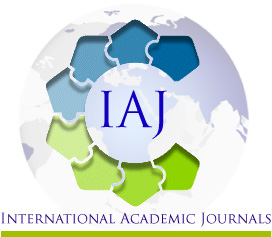FACTORS INFLUENCING UTILIZATION OF CASH TRANSFERRED TO ORPHANS AND VULNERABLE CHILDREN IN RUNYENJES CONSTITUENCY, EMBU COUNTY, KENYA
Martin Kaborio - Master of Arts in Project Planning and Management, University of Nairobi, Kenya
Dr. Stephen Luketero - Department of Mathematics, University of Nairobi, Kenya
ABSTRACT
It is the primary responsibility of any government to offer social protection to its vulnerable populations. The Kenyan government has not been left behind in provision of social protection to the vulnerable that includes the older persons, persons with severe disabilities and the orphans and vulnerable children. Childhood in Kenya is defined by the fact that over 50% of Kenyans live in absolute poverty, which means that 8.6million children live below the poverty line. As the government plays the role of protecting the OVCs a question arises as to whether these resources transferred to the beneficiaries are being utilized well. The sole purpose of the study was to determine the factors influencing utilization of cash transferred to orphans and vulnerable children in Runyenjes Sub-county,Embu County. The study was guided by four objectives to establish how demographic characteristics of caregivers influence utilization of cash transferred to OVCs,to determine how home factors influence utilization of cash transferred to OVCs, to determine how the frequency of cash transferred influence utilization of cash transferred to OVCs and to establish how the attitude of beneficiaries influence the utilization of cash transferred to OVCs. The study adopted theoretical and conceptual frameworks where in theory the social capital theory was used to explain the social aspect of the study. Conceptual framework demonstrates the relationship between independent variables and dependent variable which was the utilization of cash transferred. The study adopted a descriptive study design. Ethical permission was obtained from National Council for Science and Technology (NACOSTE). The study found that most of the caregivers were female and were above the age of 40. The study findings also revealed that a consensus among family members on how to use the money for the benefit of caregivers and that the environment of the household beneficiary was good. The study also found that households received payments but was not frequent due to delays in approval of funds. The study found that the input of the beneficiaries on how cash transferred was utilized was mostly not being considered. The study concluded that demographic characteristics had the greatest effect on the utilization of cash transferred to orphans and vulnerable children, followed by frequency of cash transferred then attitude of beneficiaries while home factors had the least effect to the utilization of cash transferred to orphans and vulnerable children. The study recommended that a system needs to be put in place where new cases of orphans and vulnerable children are automatically enrolled into the system. The study further recommends that there is need for increase of the amount paid to the OVC in form of school fees, money to take care of their personal school effects and many more. Further studies needs to be undertaken to identify the challenges orphans and vulnerable children face and their needs so as to determine if these cash transfers cater for their needs as beneficiaries. The study also recommends further study on the number of orphans and vulnerable children and the relationship between uniform amounts being offered to all households in the programme on the provision of goods and services to the beneficiaries who are the orphaned children.









